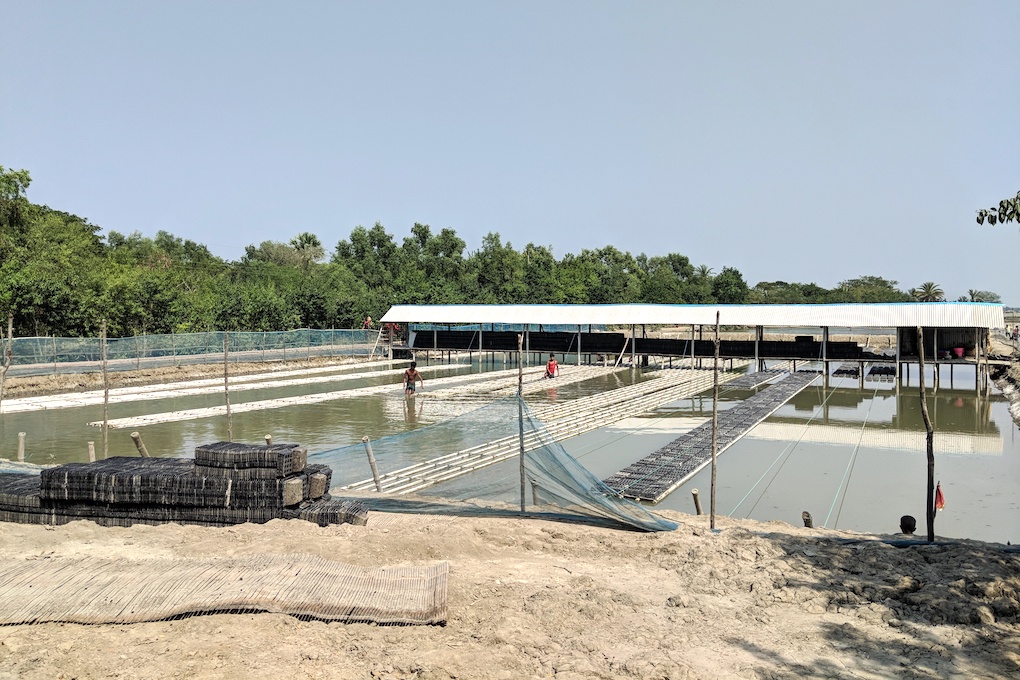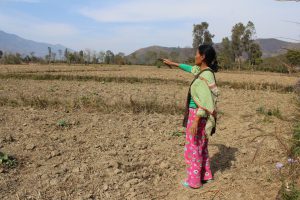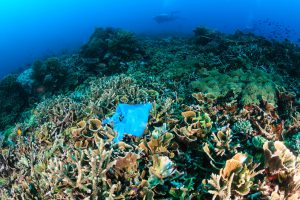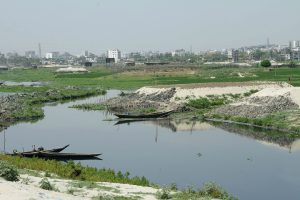For as far as the eye could see, there are fisheries in Satkhira growing saltwater prawns. Satkhira district in south-western Bangladesh bordering India is famous for its bagda chingri (tiger prawns), most of which are exported all over the world. In recent times, a trend of cultivating mud crabs has caught on in this area, fuelled entirely by overseas demand, particularly from countries like China, Taiwan, Thailand, Singapore, Malaysia, South Korea, and Japan.
Local residents and crab traders say most of the catch is exported live to Japan, where they are considered a delicacy and fetch a premium price. Curiously, the soft-shelled mud crabs (Scylla serrate), also known as mangrove crabs and found in the wild, are not eaten locally and are cultivated solely for export. Some villagers say the shallow ponds of depths of 2-3 feet become unsuitable for cultivating anything else once mud crabs are grown for a few years because the soil becomes exceedingly saline, too salty even for brackish water shrimps.
In Talberia village on the northern fringes of Sundarbans, mud crabs have become the preferred crop for villagers, who have been shifting from prawn cultivation in brackish water ponds, partly due to lower risks. “I used to cultivate tiger prawns in my gher (fishery) but my crop failed due to a viral epidemic,” Nirmal Chandra Mandal of Talberia told thethirdpole.net. “It is better to cultivate crabs as they are much more resistant to pest attacks.”
Higher returns also play a big role in the shift to mud crabs. Kalpana Gayen, a mother of two boys, one of whom is a prawn trader, has also started cultivating crabs. “I earn around BDT 40,000 (USD 480) a year from selling crabs, which is almost double the amount I used to get from tiger prawns,” Gayen said.

The situation was completely different a couple of decades ago. Most farmers in Talberia used to grow rice in the fertile, low-lying lands around the village. That changed in 2009, when Cyclone Alia broke embankments and flooded the fields, making them saline. Most residents turned to prawn cultivation, following the trend since the late 1970s across much of coastal Bangladesh, which found a ready export market and resulted in better livelihoods for poor people in this underdeveloped region of the country.
Bangladesh has over 710 kilometres of coastline with more than half a million hectares (5,000 square kilometres) of mangrove tidal flats suitable for brackish water aquaculture. Although the nation has made rapid economic progress since its independence in 1971, large sections of its population remain poverty stricken. With a per capita income of USD 1,532 in 2017, the IMF ranked Bangladesh a lowly 148 out of 186 countries. In comparison, its much larger neighbour India had a per capita income of USD 1,852 in 2017 with a country rank of 140.
Smallholder aquaculture is seen as a viable solution for its people living in coastal areas, as the consumption of fish and shrimps is traditional in all parts of the country and also has high overseas demand. Since the 1980s, saltwater prawn farming has emerged as a prominent means of livelihood in the area around the Sundarbans, the world’s largest mangrove forest that straddles Bangladesh and India. Most local residents are poorer than other parts of Bangladesh and have also been suffering from the impacts of climate change such as accelerated coastal erosion, sea level rise and increasingly violent cyclonic storms.

Shrimps and crabs are the third largest foreign exchange earner for Bangladesh, which runs a huge trade deficit of USD 8.62 billion. Seafood exports of USD 544 million in 2012-13 accounted for 4.4% of its GDP. It provides direct employment to 1 million people and another 3.5 million are dependent on it. However, the lure of easy earning has resulted in reports of unsustainable farming practices, particularly the overuse of antibiotics and increased salinity in the soil.
In Joymonigola village near Mongla in Bagerhat district, about 100 kilometres from Satkhira, villagers have also started cultivating mud crabs in a place that risks inundation due to rising sea levels brought on by climate change.
See: Keeping heads above rising sea, barely
Due to increased salt in the soil, rice cultivation has become virtually impossible and residents have little choice but to turn to brackish water aquaculture. And the culture of choice is mud crabs due to its lower vulnerability to pest and viral attacks and the prospect of high returns, reasons similar to what farmers say in neighbouring Satkhira district.
https://www.youtube.com/watch?v=oKBEx-nJgAE
For Subodh Chandra Gayen, a resident of Joymonigola, the progression from rice to prawn to crab cultivation is clear. “Saltwater gets into our fields frequently. Once the soil becomes saline, it’s impossible to grow rice unless you leave the field fallow for at least three years for rainwater to leech the salt away. That’s not an option for poor farmers like us,” he told thethirdpole.net. “Prawn cultivation is possible but it has become risky in recent years due to viral outbreaks. Growing crabs is better because they are hardy and traders give us a good rate for them.”
Scientific validation needed
The father of a grown up son and daughter says that mud crabs, from which he has earned some BDT 30,000 (USD 361) last year, can be cultivated in highly saline water that is unsuitable even for tiger prawns.
There is little scientific validation to these claims but most villagers cultivating crabs across Satkhira and Bagerhat districts are unanimous on this. “After we cultivate prawns in a field for a few years, it becomes so saline that it is only fit for growing crabs,” says Nirmal Chandra Mandal of Talberia village in Satkhira.
Mud crabs are seen as an incidental product arising from the culture of shrimps. Mud crab farming is still dependent on wild resources though some hatcheries have recently been established. As the demand of mud crab in the international market has increased, the number of crab gatherers has also significantly increased. In addition, gathering of crabs that have not reached their adult age for fattening has contributed to the depletion of adult crabs as breeders, according to a 2015 study. Since wild resources are now under threat, the management of resources and establishment of hatcheries are needed to sustain the mud crab industry in Bangladesh, the study said.
Most of the studies done on prawn and crab fisheries are socio-economic in nature and there is more research needed to say for sure that shrimp and crab aquaculture leads to increased salinity, according to Pavel Partha. Partha is the Coordinator, Diversity, Interdependency and Pluralism at non-profit development organisation called Bangladesh Resource Center for Indigenous Knowledge (BARCIK). BARCIK works with local communities to incorporate indigenous knowledge and local practices into contemporary development interventions.
“What is certain, however, is that these recent changes in farming practices are having an impact on the local mangrove ecosystem,” Partha told thethirdpole.net. “The extent of impact can only be ascertained through detailed scientific research.”
Till that happens, and unless alternative livelihoods are secured for the impoverished communities living around the Sundarbans in Bangladesh, and Japanese craving for mud crabs remains insatiable, there is no immediate reason for such farming to slacken. From the present position of global market-driven demand and supply food chain, sound ecological management of the endangered Sundarbans seems to be a far cry.
![<p>A young boy working in a mud crab farm in Joymonigola village [image by by: Soumya Sarkar]</p>](https://dialogue.earth/content/uploads/2018/03/Crab3.jpg)








